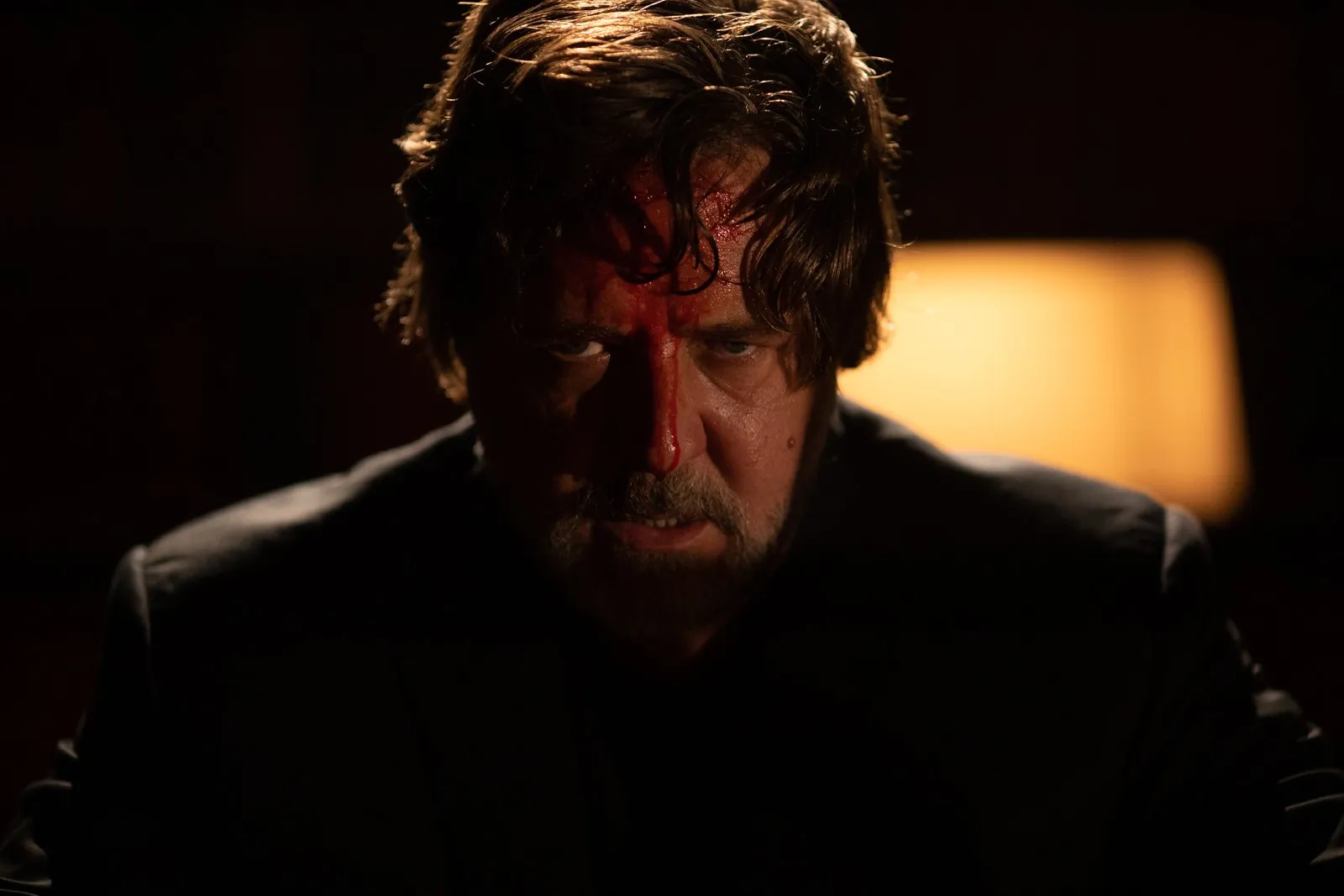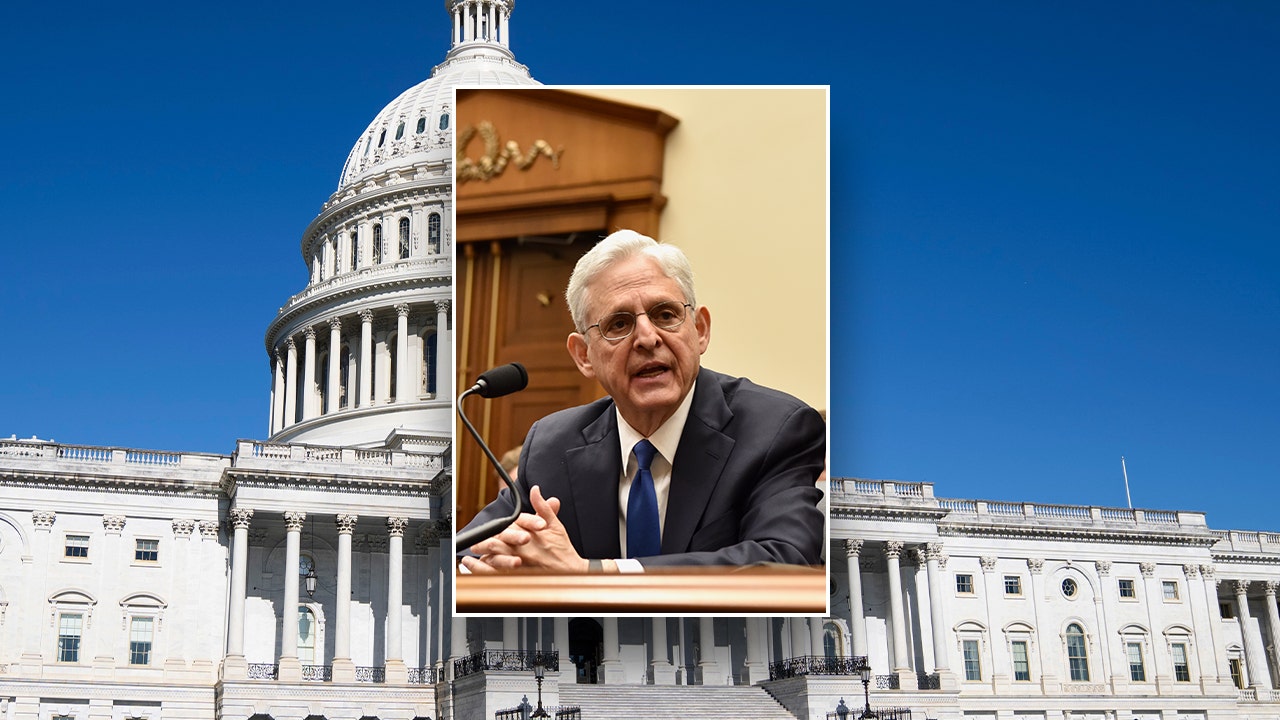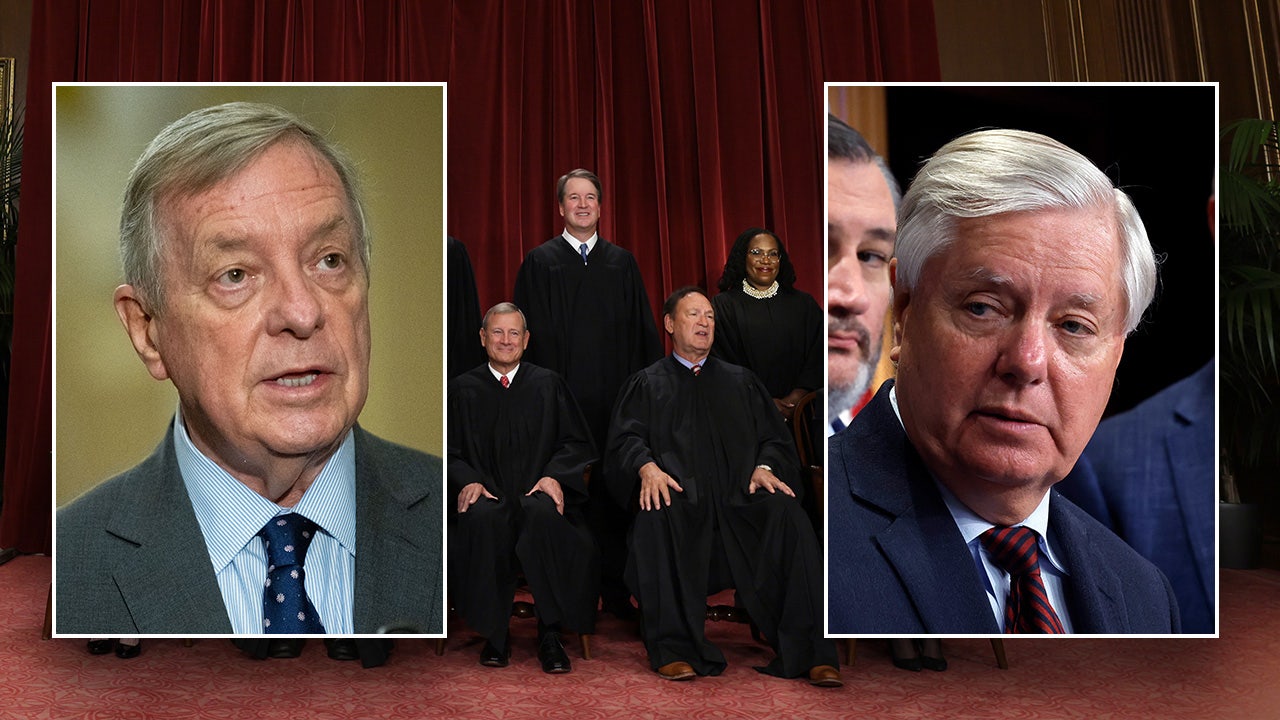Entertainment
Review: Phish mounts a human-scale spectacle at Las Vegas Sphere

The massive LED video screen that forms the interior surface of Sphere can be used to transport audiences to the tops of mountains, to outer space, to beneath the feet of an elephant standing as tall as a 20-story building.
On Friday night, Phish turned the place into a car wash.
Playing the second date in a sold-out four-night stand at this state-of-the-art venue just off the Las Vegas Strip, the veteran jam band from Vermont took full advantage of the technological capabilities that cost the building’s mastermind, Madison Square Garden Entertainment Chief Executive James Dolan, five years and more than $2 billion to bring to life last fall.
At one point in the nearly four-hour gig, the 160,000-square-foot screen — said to be the highest-resolution in the world — became a starry night sky so crisply rendered that you could almost believe the roof had retracted; at another point, Sphere transformed into an underwater kelp forest with sunlight streaming down from the top of the dome. The venue’s sound system was just as impressive, with a finely detailed mix and seatback haptics that allowed you literally to feel the oomph of bassist Mike Gordon’s low notes.
Phish’s show Friday was the second date in a sold-out four-night stand at Sphere.
(Alive Coverage)
Yet Phish’s production — the second by a band to play Sphere after U2’s opening engagement — wasn’t about excess or grandiosity; it was homey, friendly, deeply quirky. After the car-wash bit, which replicated the experience of crawling through one, a gigantic dog appeared and proceeded to lick what looked like the other side of the screen in slow motion as the band performed its song “You Enjoy Myself.”
The approach certainly differed from that of U2, whose 40-date residency launched in September and ended last month. Built around the Irish group’s 1991 album “Achtung Baby,” U2’s show riffed on big ideas about celebrity and media and the intersection of politics and capitalism; it used Sphere’s eye-popping tech to uphold the band’s distinct brand of rock-star heroism, reasserting U2’s place in a cultural lineage stretching from Frank Sinatra to Elvis Presley to the Beatles to Prince.
For Phish, perhaps music’s biggest cult band, Sphere wasn’t a means of self-glorification but of community-building: One thing you thought about over the course of the band’s two sets and an encore was how tiny the players looked onstage — the same size, in other words, as any of the 18,000 or so people in the crowd. Even when the screen would show a close-up of one of the players — Gordon, singer-guitarist Trey Anastasio, keyboardist Page McConnell and drummer Jon Fishman — the image would be warped almost beyond recognition.
Jam bands, of course, have a long history of elaborate visual presentations. Ahead of Phish’s run in Vegas, fans of the band wondered online whether its lighting designer, Chris Kuroda, would have the space to do his thing properly amid Sphere’s digital overload. (The answer was kind of.) So it makes sense that Sphere might become a destination for other acts in the tradition; indeed, next up at the venue is Dead & Company, which will begin a 24-show stint in May after saying that its 2023 tour would be its last.

Phish performs.
(Rene Huemer / MSG Entertainment)
With no fear of being overshadowed by the room, Phish leaned into Sphere’s immersive potential with an assortment of water-themed visuals: hundreds of swimmers floating in doughnut-shaped inflatables atop the waves of a rippling sea; marine life darting through the columns of a vast sunken monument; a psychedelic waterfall pouring over a cliff that seemed almost untouchably far away from wherever you were sitting in the steeply raked amphitheater. As part of a production team parked behind dozens of glowing monitors in the middle of the room, Abigail Rosen Holmes, Phish’s creative director, manipulated these images in real time, responding — sometimes subtly, sometimes dramatically — to the twists and turns of the band’s improvisations.
In a funny twist, Phish’s lack of anxiety about being upstaged by what was happening on Sphere’s wraparound screen — the members themselves seem well aware that they’ve never been much to look at — meant that Friday’s show actually felt like it was about music, which was clearly the point for a band that famously never repeats a set list.
“Bathtub Gin” was jaunty and playful, with McConnell threading a bit of Gershwin’s “Rhapsody in Blue” into the song’s fabric; “Lonely Trip” was a lilting ballad with one of the evening’s few convincing vocal turns from Anastasio. “Split Open and Melt,” which came just before the evening’s intermission, was the highlight of the concert: a demented boogie-rock freak-out that landed somewhere between early Sonic Youth and electric-era Miles Davis.
For its encore, Phish played the plaintive “Wading in the Velvet Sea” as photos stretching back to the band’s beginnings in the mid-1980s flickered across Sphere’s screen, and for a moment the musicians seemed to be indulging in the kind of rock-god mythologizing the rest of the show resisted. Then you realized that most of the pictures depicted these guys in various humble backstage scenarios: just four lifers getting ready to go to work for their people.

Movie Reviews
Film Review: The Exorcism – SLUG Magazine

Film
The Exorcism
Director: Joshua John Miller
Miramax and Outer Banks Entertainment
In Theaters: 06.21
I have a theory that Nicolas Cage is appearing in real movies again because Hollywood made a deal with the devil, giving him Russell Crowe in exchange for Cage. It may sound implausible, but I challenge you to watch The Exorcism and not see some merit in the hypothesis.
Tony Miller (Russell Crowe, Gladiator, A Beautiful Mind) is a washed-up star looking for a big comeback. Tony got a lot of bad press during a battle with alcoholism while his wife was in the hospital dying of cancer, and his fall from grace was a big one. When he lands a leading role in a horror film-a loose remake of The Exorcist called The Georgetown Project-he may have found the vessel he needs to get his career and his life back on track. He does feel a tad uncomfortable about the fact that he got offered the role after the actor who was originally cast was killed in a mysterious accident on set, but hey, a job is a job, right? As shooting on the film gets underway, Tony struggles to remember his lines, and his daughter, Lee (Ryan Simpkins, the Fear Street trilogy), who gets a job on set as a production assistant, notices strange aspects of his behavior, particularly at night, including muttering “Make way for the demon Moloch” in Latin. When Lee speaks to the film’s religious consultant, Father Conor (David Hyde Peirce, Frasier, The Perfect Host) he helpfully offers the following insight: “I wonder if what you’re describing points to some kind of stuff.” Lee begins to question whether her father’s rapid decline points to a relapse into old addictions or something more malevolent.
The Exorcism is co-written and directed by Joshua John Miller, son of the late playwright and actor Jason Miller, best remembered by cinephiles for playing Father Damien Karras in The Exorcist in 1973. This film is clearly inspired by the hype in the ‘70s involving the possibility that the productions of The Exorcist and The Omen were plagued by strange and unexplainable supernatural occurrences, and may have even been cursed. It’s a highly intriguing jumping off-point, and almost 50 minutes of the 95-minute runtime are genuinely compelling. The bulk is this is merely setting up a big third-act conclusion, however, and it’s a set-up for a payoff that never comes. The final third of The Exorcism is so rushed and slapdash that it’s clear that the studio took an “if this can’t be good, at least it can be short” approach to post-production, and it’s just a lot of rushed nonsense that doesn’t lead to any satisfactory ending or even a remotely involving climax.
Crowe throws himself into his performance with gusto, and he’s so well cast as an actor who has fallen from grace due to a bad reputation that when the movie is on track, it’s enthralling to watch him. Sadly, he further he falls into his seeming possession, the less interesting the performance becomes, and by the end, I simply didn’t care. Simpkins is effective as Lee, and Hyde Peirce is such a delightful presence he’d almost make the film worth recommending if his character wasn’t given such a short shift. Adam Goldberg (Saving Private Ryan, Zodiac) has some memorable moments as Peter, the egotistical and abusive director of The Georgetown Project, but Sam Worthington (Avatar, The Debt) is given so little to do that one wonders if a big chunk of his performance ended up on the cutting room floor. Goldberg’s character pretentiously describes The Georgetown Project as “a psychological drama wrapped within in the skin of a horror movie,” and there’s a strong feeling that The Exorcism itself is going for something similar, along with an element of satire. The fact remains that whether the movie being released isn’t the one that Miller set out to make, or he simply wrote himself into a corner and couldn’t find a way out, it ends up failing on every level. By the end, it’s not scary, it’s not dramatic and it’s not clever. The Exorcism may never have had the potential for greatness, yet it certainly could have been much more than a major chore to finish watching. It ranks among the biggest duds of the year, and far from being a comeback for Crowe. The release of this film in the same year that his great classic, Gladiator, is getting a long-awaited sequel without him is a depressing embarrassment. –Patrick Gibbs
Read more film reviews:
Film Review: The Bikeriders
Film Review: Thelma
Entertainment
‘The faker a show is, the more ethical it is’: Emily Nussbaum on the conditions of reality TV

On the Shelf
Cue the Sun!: The Invention of Reality TV
By Emily Nussbaum
Random House: 464 pages, $30
If you buy books linked on our site, The Times may earn a commission from Bookshop.org, whose fees support independent bookstores.
Nick Lachey and Jessica Simpson were still “Newlyweds” grappling with the chicken or tuna conundrum when television critic Emily Nussbaum first came up with the idea of writing a book about reality TV.
“I waited 20 years until reality TV was an established industry and I had a career writing about television,” Nussbaum says about the impetus for “Cue the Sun!: The Invention of Reality TV,” which she conceived of in 2003 during a conversation with friends and colleagues amid the explosion of the genre with the shows “The Bachelorette,” “America’s Next Top Model” and “Joe Millionaire.”
Dissuaded by these naysayers, who dismissed the genre as a flash in the pan (insert chortle here), Nussbaum carved out a career in criticism as a culture editor for New York Magazine and as a current staff writer for the New Yorker, covering such prestige shows as “The Sopranos” and “Mad Men” in essays that were collected in her first book, 2019’s “I Like to Watch: Arguing My Way Through the TV Revolution.”
That was part of a two-book deal with Random House, so for her second, Nussbaum thought she’d revisit that idea from two decades ago, not from a critical point of view but from a reported one. Using more than 300 interviews with the people who invented the genre, Nussbaum crafts the story of the origins of reality TV from 1947 to 2009.
But wait — television was a new medium in 1947, let alone reality television. That’s the first clue that “Cue the Sun,” out Tuesday, isn’t your average history of the genre, which Nussbaum calls “dirty documentary.”
While loosely linear, “Cue the Sun!” groups programs by thematic similarities: game shows, prank shows, reality soap operas and clip shows. These include prank show “Candid Camera” and its roots in the radio show “The Candid Microphone,” hence the 1947 date stamp, as well as clip shows such as “America’s Funniest Home Videos” and “Cops,” to which Nussbaum devotes much of the early part of the book.
“Each of those takes cinema verité, which people think of as an elevated discipline where you hold the camera and capture the truth with a lot of patience, and then mix in commercial additives that give it a format: speed it up, make it serialized, make it inexpensive, put pressure on people. That’s how I think of [reality TV],” she says.
Her initial stages of reporting in early 2020 unintentionally foreshadowed the year that would follow: Nussbaum tested positive for COVID-19 and developed long COVID after one of her first reporting trips for the book, which included interviewing the creator of “Cops,” the “charming pirate” John Langley, who looms large over “Cue the Sun!” In June 2020, the clip show was pulled off the air after 33 seasons in response to the Black Lives Matter resurgence that summer. (The show has since resumed.)
“There’s a touchingly naive statement that someone was making, that the problem with ‘Cops’ is not that it would document [police brutality] but that [police] would act nicer on camera [while still committing abuses of power off camera]. And, of course, that’s not an argument that held up because at this point, everyone is a reality producer because everyone has a camera in their hand,” Nussbaum says, conjuring images of civilian-captured police brutality on social media.
Nussbaum doesn’t agree with Langley’s stance on “Cops,” detailed in “Cue the Sun!,” that the program captured raw material and presented it neutrally. However, she acknowledges that it’s “just one show in this book that has major ethical problems.”
One such series that Nussbaum — and, indeed, many others — experiences joy from is “Project Runway.”
“Here’s a show that celebrates creativity, that’s pro-gay … has a fantastic host [in Tim Gunn] who modeled positivity and warmth, [and] is an offshoot of the ‘classy’ ‘Project Greenlight,’ and then I looked into the origins of it and I was like, ‘Oh, yeah, ‘Project Runway’ [was developed] because Harvey Weinstein wanted to have a show about models,’” Nussbaum deadpans with her signature dry wit. (Miriam Haley, a former production assistant on the show, testified at Weinstein’s 2020 trial in New York that the disgraced Hollywood mogul sexually assaulted her at his apartment in 2006.)
While shows such as “Project Runway,” “Survivor” and “The Amazing Race” have all been praised for their contributions to the genre and the culture at large, Nussbaum says it’s actually reality stars who are producers on their own “soft-scripted” shows, like the much-maligned Kardashians, who experience the least problematic conditions.
“The faker a show is, the more ethical it is,” she says. “The people who’ve agreed to be reality stars and ‘play’ themselves, those shows might have their own ethical problems, but they’re not ‘real’ in the same way.”
“Bona-fide amateurs,” a category of reality TV performers that exists somewhere in the gray area among scripted performers, hosts and documentary subjects that Nussbaum discovered while reporting her recent New Yorker article on “Love Is Blind,” are unprotected.
“When I wrote this book, nobody was doing anything to try to protect cast members,” such as former “Real Housewives of New York City” star Bethenny Frankel advocating for reality television stars to unionize amid last year’s strike by members of the Screen Actors Guild-American Federation of Radio and Television Artists. (Nussbaum interviewed producer Andy Cohen for “Cue the Sun!” prior to the filing of several lawsuits against the Bravo franchise from other Housewives.) “This genre is a strikebreaker” that grew out of the 1988 strike by members of the Writers Guild of America that spawned “Cops,” Nussbaum says. “It’s a budget mechanism. It’s a way not to pay writers or actors.”
While it might be hard for some to muster sympathy for reality stars who’ve gone on to make millions from their exposure in the genre, Nussbaum offers this: “[Just] because [some people] find reality stars ridiculous or gross or are villains on the show, which is an edited version of themselves, [doesn’t mean that they don’t] deserve labor rights or to be compensated. The whole idea of the genre as a guilty pleasure prevents people from seeing it as the other things it is, one of which is a workplace.”
Movie Reviews
Mallari (2023) – Review | Filipino Horror on Netflix | Heaven of Horror

An intriguing story worth knowing
The story in Mallari is based on a horrific true story, which I will get back to. However, I can say that in this movie, we become familiar with Father Severino Mallari. He was a 19th-century priest during the Spanish occupation.
Unfortunately for the people in his parish in Pampanga, he descents into madness and kills people. A lot of people!
All supposedly in an attempt to help his ailing mother live longer.
In the story told in this movie, we get several stories that interlink three generations of the Mallari family. From Juan Severino in 1812 to Johnrey in 1948, and finally Jonathan, in 2023.
Both Johnrey and Jonathan have the ability to see and move across time. Well, sort of, you’ll have to watch the movie to know the ins and outs of their gift as “travelers”. For the record, I liked this part as it gave the story an extra edge.
What I did not like was the crazy chronology of the storytelling, the repetition of both scenes (in part due to the time travel aspect) and the same CGI “horror faces” that were anything but scary. Well, to me anyway.
For the record, only Severino is based on a real person. His descendants are fictional.
-

 Politics1 week ago
Politics1 week agoPresident Biden had front row seat to dog, Commander, repeatedly biting Secret Service agents: report
-

 Politics1 week ago
Politics1 week agoBiden's attorney general is fighting back as the GOP-led House contemplates contempt
-

 News1 week ago
News1 week ago171,000 Traveled for Abortions Last Year. See Where They Went.
-

 Politics1 week ago
Politics1 week agoTrump travels to DC to meet with congressional Republicans, speak with nation's top business executives
-

 Politics1 week ago
Politics1 week agoDurbin looks to force Supreme Court ethics bill vote amid Alito controversy
-

 World1 week ago
World1 week agoThe far right will probably fall short in French legislative elections
-

 World1 week ago
World1 week agoHezbollah rains rockets on Israel after senior commander killed
-

 News1 week ago
News1 week agoPhotographer shares ‘magical’ photos of rare white bison calf at Yellowstone















